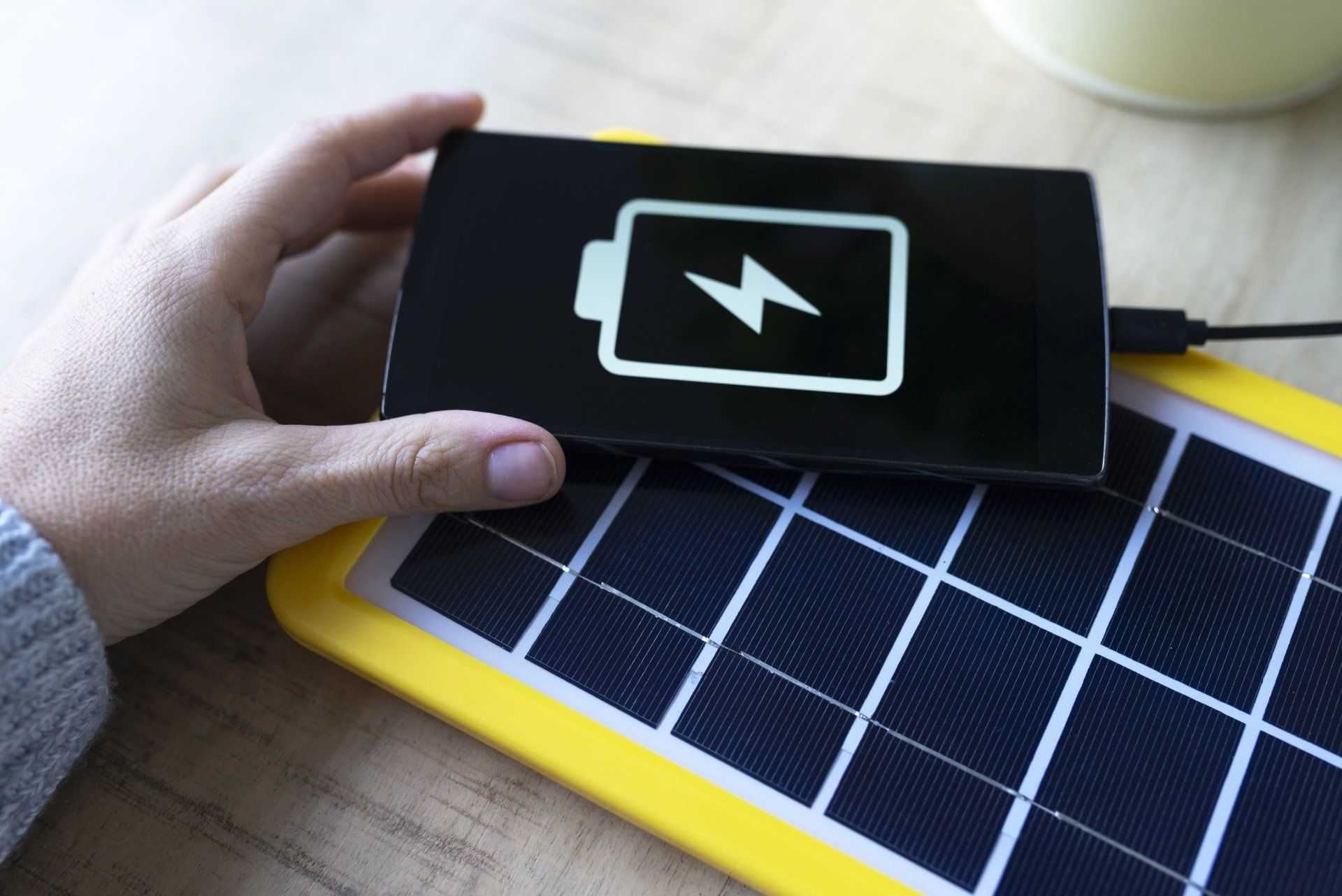Data Security

We take your privacy seriously. All interactions are subject to our Terms of Service, Privacy and Cookie Policies.
Follow Us
Get the latest news delivered to your inbox.
The Solar Rebate: How to Get Money from the Government to Help You Install Solar Panels
Share with Friends
Harnessing Solar Power and Government Incentives: A Comprehensive Guide to Securing the Solar Rebate
The Solar Rebate: How to Get Money from the Government to Help You Install Solar Panels
Introduction
Are you considering installing solar panels on your property but worried about the cost? Look no further! In this comprehensive guide, we will explore the wonderful world of solar rebates and how you can leverage government incentives to make your solar dreams a reality. The Solar Rebate: How to Get Money from the Government to Help You Install Solar Panels will provide you with all the information you need to navigate the rebate application process, maximize your savings, and contribute to a sustainable future. Let's dive in!
The Solar Rebate: How Does It Work?
Before we delve into the nitty-gritty of obtaining the solar rebate, let's first understand how this incredible opportunity works. The solar rebate is a government initiative aimed at promoting the adoption of solar energy by providing financial incentives to homeowners and businesses that invest in solar panel installations. By offering rebates, the government encourages individuals to embrace renewable energy sources and reduce their reliance on traditional fossil fuel-based electricity.
To access the solar rebate, you typically need to follow a few key steps. First, you'll need to evaluate your eligibility for the program. Then, you'll need to gather the necessary documentation, submit your application, and wait for approval. Once approved, you can enjoy the financial benefits of the rebate, which can significantly offset the upfront costs of installing solar panels.
Eligibility Requirements: Who Can Benefit from the Solar Rebate?
To make the most of the solar rebate, it's important to understand the eligibility requirements. While specific criteria may vary depending on your location, here are some common factors that determine eligibility:
- Residential Property Ownership: The solar rebate is typically available to homeowners who own the property where the solar panels will be installed. Renters may also be eligible in certain cases, so it's worth exploring your options.
- System Size Limitations: In some instances, the solar rebate program may have size limitations for the solar system you can install. These limitations are in place to ensure fairness and make the program accessible to as many individuals as possible.
- Grid Connection: Generally, your property should be connected to the electrical grid to qualify for the solar rebate. This ensures that excess energy produced by your solar panels can be fed back into the grid, further promoting renewable energy generation.
- Compliance with Standards: It's essential that your solar panel installation meets specific quality and safety standards outlined by the government. This ensures the longevity and reliability of your system while safeguarding the environment.
Make sure to research the eligibility requirements in your specific location or consult with a solar energy professional who can guide you through the process.
Financial Benefits: How Much Money Can You Save?
One of the most enticing aspects of the solar rebate is the substantial financial benefits it offers. By leveraging government incentives, you can save a significant amount of money on your solar panel installation. The exact amount of savings will depend on various factors, such as the size of your solar system, your location, and the current rebate program.
Here are some key financial benefits you can expect from the solar rebate:
- Rebate Amount: The solar rebate typically provides a fixed dollar amount or a percentage of the total installation cost. For instance, you might receive a rebate of $2,000 or 30% of the installation cost, up to a certain limit.
- Reduced Payback Period: With the financial assistance of the solar rebate, the payback period for your solar investment can be significantly reduced. This means you will start saving on your electricity bills sooner and enjoy a higher return on investment.
- Lower Installation Costs: By lowering the upfront costs, the solar rebate makes solar panel installations more affordable. This enables a broader range of individuals to access renewable energy and contribute to a greener future.
It's important to note that rebate amounts and programs can change over time, so it's crucial to stay up-to-date with the latest information from your government and local energy authorities.
How to Apply for the Solar Rebate: A Step-by-Step Guide
Now that you have a good understanding of the solar rebate and its benefits, let's explore the step-by-step process to apply for this valuable incentive. By following these guidelines, you can streamline your application and increase your chances of success.
Step 1: Research Local Programs and Incentives
Start by researching the solar rebate programs available in your area. Check with your local government, energy agencies, and utility providers to identify the specific incentives, eligibility requirements, and application procedures. Look for online resources, government websites, and reputable solar industry platforms to gather accurate and up-to-date information.
Step 2: Assess Your Eligibility
Once you have a clear understanding of the available programs, assess your eligibility based on the criteria we discussed earlier. Gather all the necessary information, such as property ownership documents, proof of grid connection, and any other required paperwork. This will help you determine whether you meet the initial requirements to proceed with the application.
Step 3: Calculate Your System Size and Costs
To make an informed decision and accurately estimate the rebate amount you may be eligible for, it's crucial to calculate your system size and costs. Consult with solar installers or use online tools to assess your energy needs, determine the optimal system size, and obtain an estimate of the installation costs. This information will be vital during the application process.
Step 4: Choose a Reputable Installer
Selecting a reputable and experienced solar installer is paramount to the success of your solar panel installation and rebate application. Look for certified installers with a proven track record and positive customer reviews. They will guide you through the process, ensure your system complies with all regulations, and increase the likelihood of a smooth application and approval.
Step 5: Prepare and Submit Your Application
Once you have all the necessary information and documentation, it's time to prepare and submit your application. Follow the instructions provided by the rebate program and ensure all required forms are filled out accurately. Double-check your application for any errors or omissions that may cause delays or rejections. Submit the application within the designated timeframe to maximize your chances of approval.
Step 6: Await Approval and Enjoy the Benefits
After submitting your application, it's time to patiently await approval from the rebate program. The processing time may vary, but you can typically expect to receive a response within a few weeks or months. Once approved, you can proceed with the installation of your solar panels and start reaping the benefits of the solar rebate.
FAQs about the Solar Rebate
To address some common queries, here are six frequently asked questions about the solar rebate, along with concise answers:
Q: How much money can I save through the solar rebate?
A: The savings will vary depending on factors such as the size of your solar system, location, and the specific rebate program. However, it's not uncommon to save thousands of dollars on your solar panel installation.
Q: Is the solar rebate available for businesses as well?
A: Yes, many solar rebate programs cater to both residential and commercial properties. Businesses can also take advantage of financial incentives and reduce their operating costs.
Q: Can I combine the solar rebate with other incentives?
A: In some cases, it is possible to combine the solar rebate with other incentives such as tax credits or grants. Check with your local energy authorities to determine the available options.
Q: Is there a limit to the number of solar rebates I can receive?
A: The number of solar rebates you can receive may depend on the specific program guidelines and your property's eligibility. Some programs limit rebates to one per property, while others may have different restrictions.
Q: How long does it take to recoup the initial investment in solar panels?
A: The payback period for your solar investment will depend on various factors such as your energy consumption, the size of the system, and the local electricity rates. With the solar rebate, the payback period is typically shorter.
Q: Are solar rebates available worldwide?
A: Solar rebates are more common in countries and regions with established renewable energy initiatives. While availability may vary, many countries offer similar incentives to encourage the adoption of solar energy.
Conclusion
Installing solar panels on your property not only helps you reduce your carbon footprint but also offers significant financial benefits. By leveraging the solar rebate, you can receive money from the government to help offset the installation costs and enjoy long-term savings on your electricity bills. Remember to research local programs, assess your eligibility, and follow the step-by-step application process we outlined in this guide. With the solar rebate, you can embrace clean energy, contribute to a sustainable future, and make a positive impact on both your wallet and the environment.




